Railway vs. DigitalOcean App Platform
At a high level, both Railway and DigitalOcean App Platform can be used to deploy your app. Both platforms share many similarities:
- You can deploy your app from a Docker image or by importing your app’s source code from GitHub.
- Multi-service architecture where you can deploy different services under one project (e.g. a frontend, APIs, databases, etc.).
- Services are deployed to a long-running server.
- Public and private networking are included out-of-the-box.
- Healthchecks are available to guarantee zero-downtime deployments.
- Connect your GitHub repository for automatic builds and deployments on code pushes.
- Support for instant rollbacks.
- Integrated metrics and logs.
- Define Infrastructure-as-Code (IaC).
- Command-line-interface (CLI) to manage resources.
- Integrated build pipeline with the ability to define pre-deploy command.
- Support for wildcard domains.
- Custom domains with fully managed TLS.
- Run arbitrary commands against deployed services (SSH).
- Shared environment variables across services.
- Both platforms’ infrastructure runs on hardware that’s owned and operated in data centers across the globe.
That said, there are some differences between the platforms that might make Railway a better fit for you.
Scaling strategies
DigitalOcean App Platform
DigitalOcean App Platform follows a traditional, instance-based model. Each instance has a set of allocated compute resources (memory and CPU).
In the scenario where your deployed service needs more resources, you can either scale:
- Vertically: you will need to manually upgrade to a large instance size to unlock more compute resources.
- Horizontally: your workload will be distributed across multiple running instances. You can either:
- Manually specify the machine count.
- Autoscale by defining a minimum and maximum instance count. The number of running instances will increase/decrease based on a target CPU and/or memory utilization you specify.
The main drawback of this setup is that it requires manual developer intervention. Either by:
- Manually changing instance sizes/running instance count.
- Manually adjusting thresholds because you can get into situations where your service scales up for spikes but doesn’t scale down quickly enough, leaving you paying for unused resources.
Beyond scaling, there are other notable limitations. DigitalOcean App Platform doesn’t natively support multi-region deployments. To achieve that, you must create separate instances in different regions and set up an external load balancer to route traffic appropriately.
Furthermore, services deployed to the platform do not offer persistent data storage. Any data written to the local filesystem is ephemeral and will be lost upon redeployment, meaning you'll need to integrate with external storage solutions if your application requires data durability.
Railway
Railway automatically manages compute resources for you. Your deployed services can scale up or down based on incoming workload without manual configuration of metrics/thresholds or picking instance sizes. Each plan includes defined CPU and memory limits that apply to your services.
You can scale horizontally by deploying multiple replicas of your service. Railway automatically distributes public traffic randomly across replicas within each region. Each replica runs with the full resource limits of your plan.
For example, if you're on the Pro plan, each replica gets 32 vCPU and 32 GB RAM. So, deploying 3 replicas gives your service a combined capacity of 96 vCPU and 96 GB RAM.
Total resources = number of replicas × maximum compute allocation per replicaReplicas can be placed in different geographical locations for multi-region deployments. The platform automatically routes public traffic to the nearest region, then randomly distributes requests among the available replicas within that region. No need to define compute usage thresholds.
You can also set services to start on a schedule using a crontab expression. This lets you run scripts at specific times and only pay for the time they’re running.
Pricing
DigitalOcean App Platform
DigitalOcean App Platform follows a traditional, instance-based pricing. You select the amount of compute resources you need from a list of instance sizes where each one has a fixed monthly price.
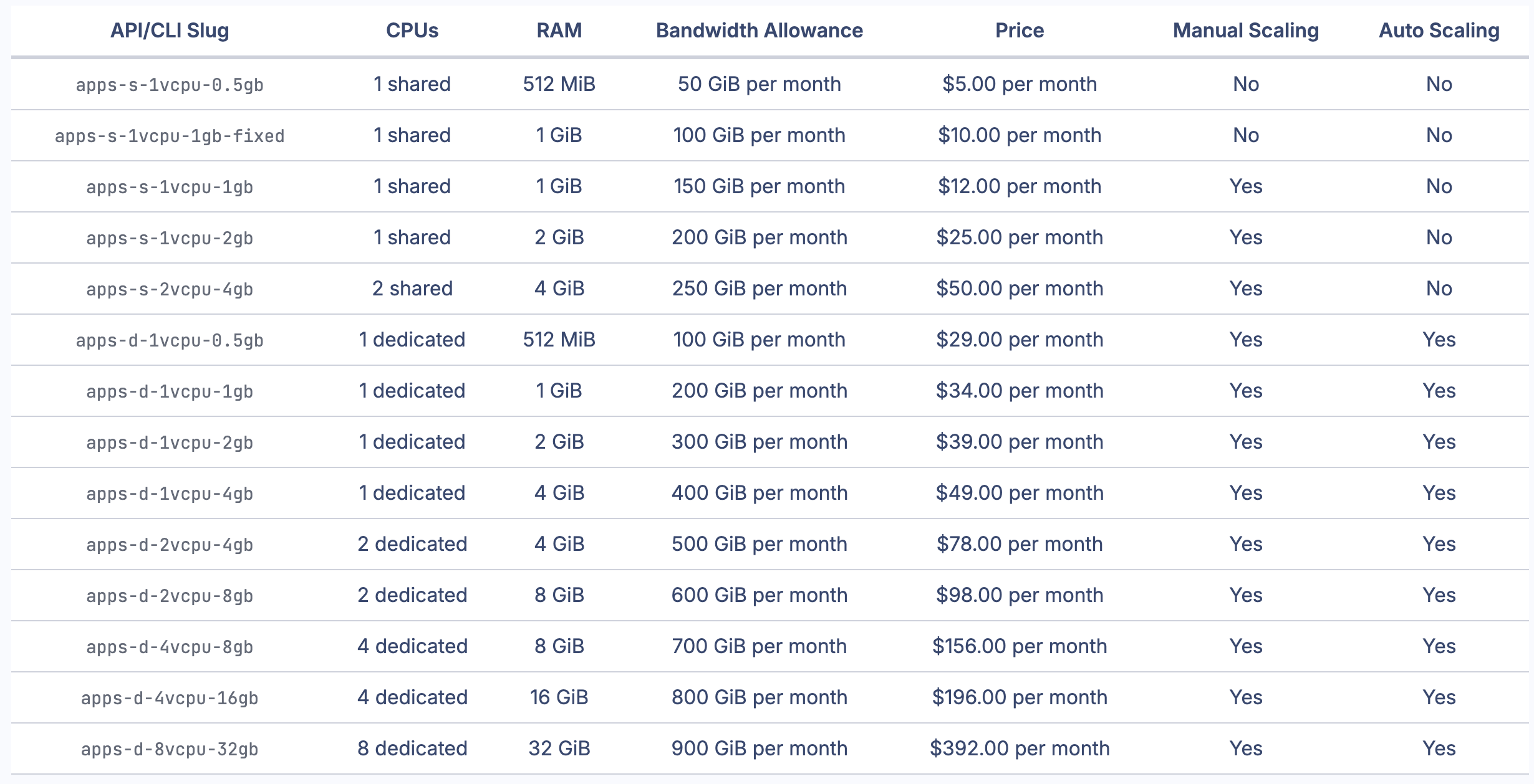
While this model gives you predictable pricing, the main drawback is you end up in one of two situations:
- Under-provisioning: your deployed service doesn’t have enough compute resources which will lead to failed requests.
- Over-provisioning: your deployed service will have extra unused resources that you’re overpaying for every month.
Enabling horizontal autoscaling can help with optimizing costs, but the trade-off will be needing to figure out the right amount of thresholds instead.
Railway
Railway automatically scales your infrastructure up or down based on workload demands, adapting in real time without any manual intervention. This makes it possible to offer a usage-based pricing model that depends on active compute time and the amount of resources it consumes. You only pay for what your deployed services use.
Active compute time x compute size (memory and CPU)You don’t need to think about instance sizes or manually configure them. All deployed services scale automatically.
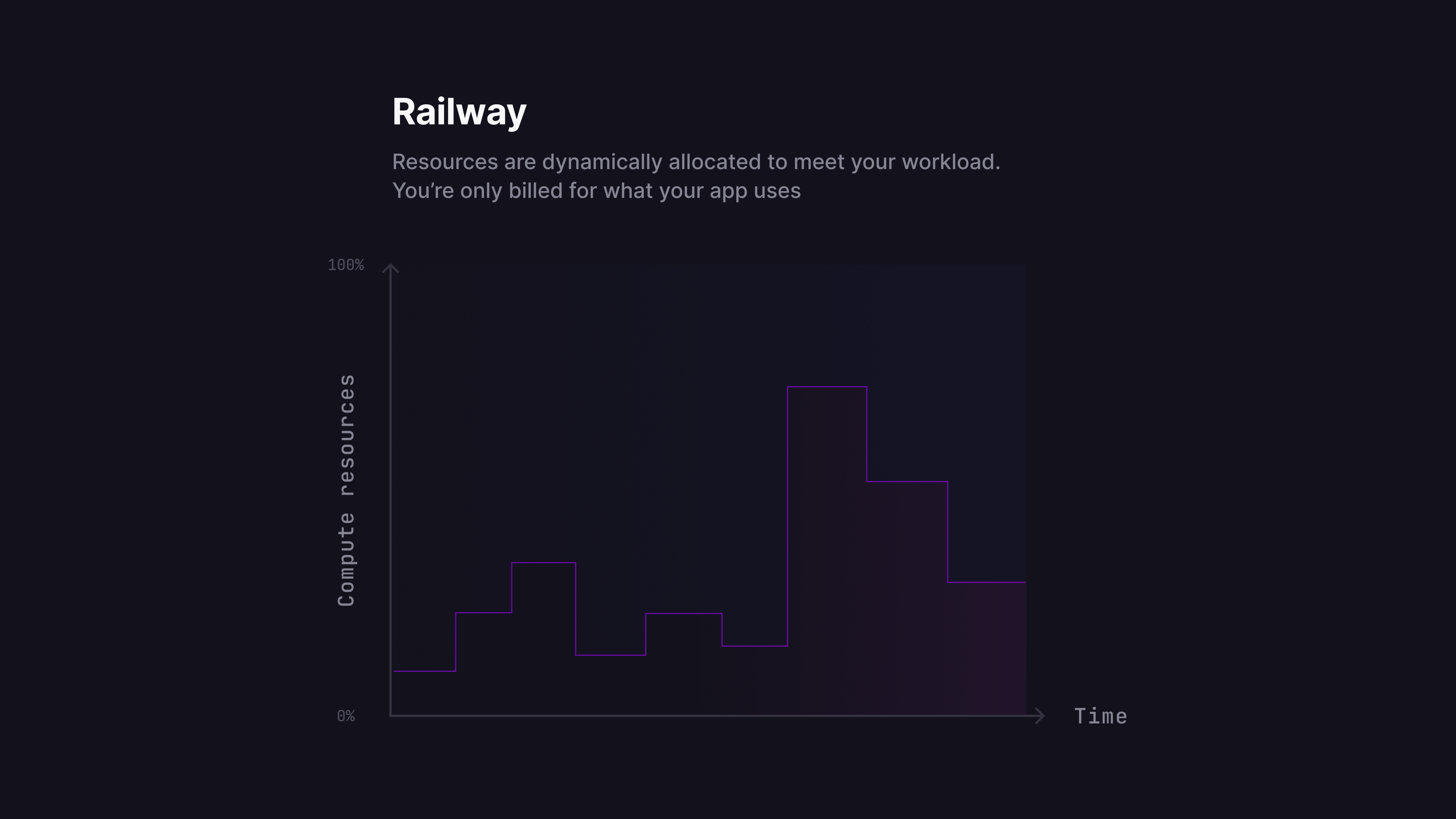
If you spin up multiple replicas for a given service, you’ll only be charged for the active compute time for each replica.
Railway also has a serverless feature, which helps further reduce costs when enabled. When a service has no outbound requests for over 10 minutes, it is automatically put to sleep. While asleep, the service incurs no compute charges. It wakes up on the next incoming request, ensuring seamless reactivation without manual effort. This is ideal for workloads with sporadic or bursty traffic, so you only pay when your code is running.
Developer Workflow & CI/CD
DigitalOcean App Platform
DigitalOcean App Platform’s dashboard offers a traditional dashboard where you can view all of your project’s resources.
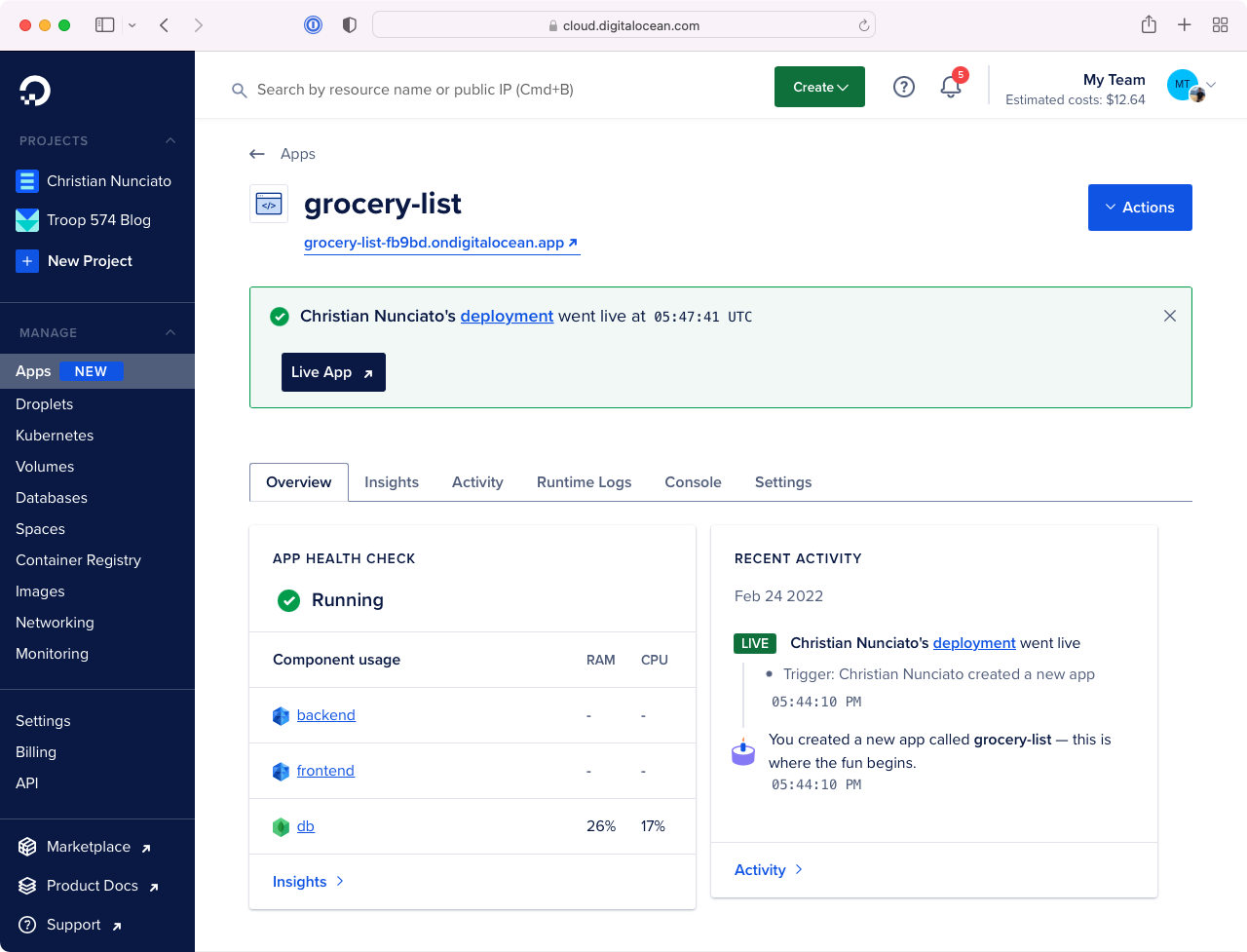
However, DigitalOcean App Platform lacks built-in CI/CD capabilities around environments:
- No concept of “environments” (e.g., development, staging, and production). To achieve proper environment isolation, you must create separate projects for each environment.
- No native support for automatically creating isolated preview environments for every pull request. To achieve this, you'll need to integrate third-party CI/CD tools like GitHub Actions.
Finally, DigitalOcean App Platform doesn't support webhooks, making it more difficult to build integrations with external services.
Railway
Railway’s dashboard offers a real-time collaborative canvas where you can view all of your running services and databases at a glance. You can group the different infrastructure components and visualize how they’re related to one another.
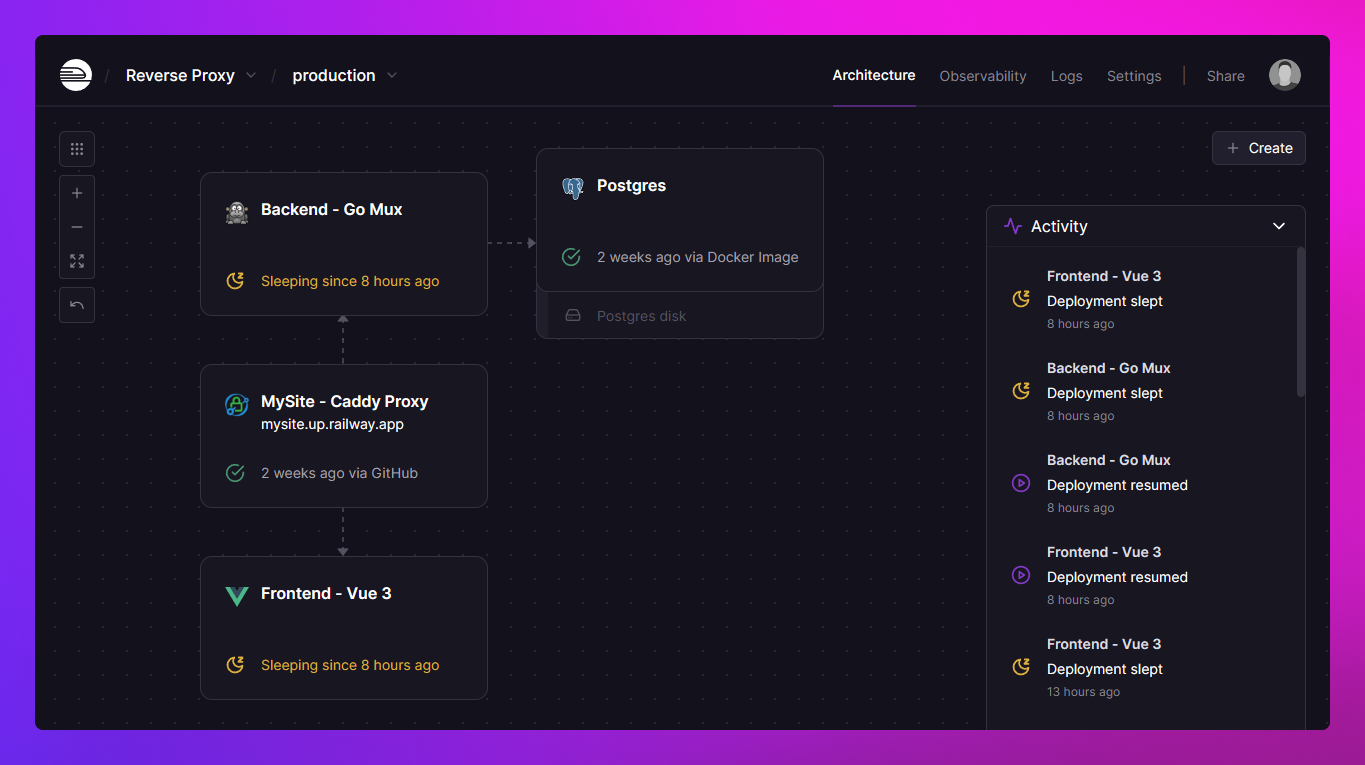
Additionally, Railway offers a template directory that makes it easy to self-host open-source projects with just a few clicks. If you publish a template and others deploy it in their projects, you’ll earn a 50% kickback of their usage costs.
Check out all templates at railway.com/deploy
Summary
| Category | DigitalOcean App Platform | Railway |
|---|---|---|
| Scaling Model | Manual instance-based scaling | Fully automated scaling |
| Vertical Scaling | Manual upgrade to larger instance | N/A – no instance sizes to manage |
| Horizontal Scaling | Manually add/remove instances or autoscaling (based on CPU/memory thresholds); requires tuning | Deploy multiple replicas; traffic auto-distributed; no thresholds required |
| Multi-region Support | Manual via separate instances and load balancers | Built-in support; traffic routed to nearest region |
| Persistent volumes | Not supported | Supported |
| Pricing Model | Fixed monthly pricing per instance size | Usage-based: active compute time × memory/CPU used |
| Cost Optimization | Requires tuning to avoid over/under-provisioning | Inherently optimized. Pay only for used compute |
| Developer Dashboard | Traditional project dashboard | Real-time collaborative canvas with visual service layout |
| Environments & CI/CD | No native concept of environments, requires manual project setup. Automated preview deployments not supported. Webhooks not supported | Native support for preview environments, CI/CD integrations, and webhooks |
| Templates & Ecosystem | Limited | Extensive template directory; creators can earn from deployed usage |
Migrate from DigitalOcean App Platform to Railway
To get started, create an account on Railway. You can sign up for free and receive $5 in credits to try out the platform.
Deploying your app
- “Choose Deploy from GitHub repo”, connect your GitHub account, and select the repo you would like to deploy.
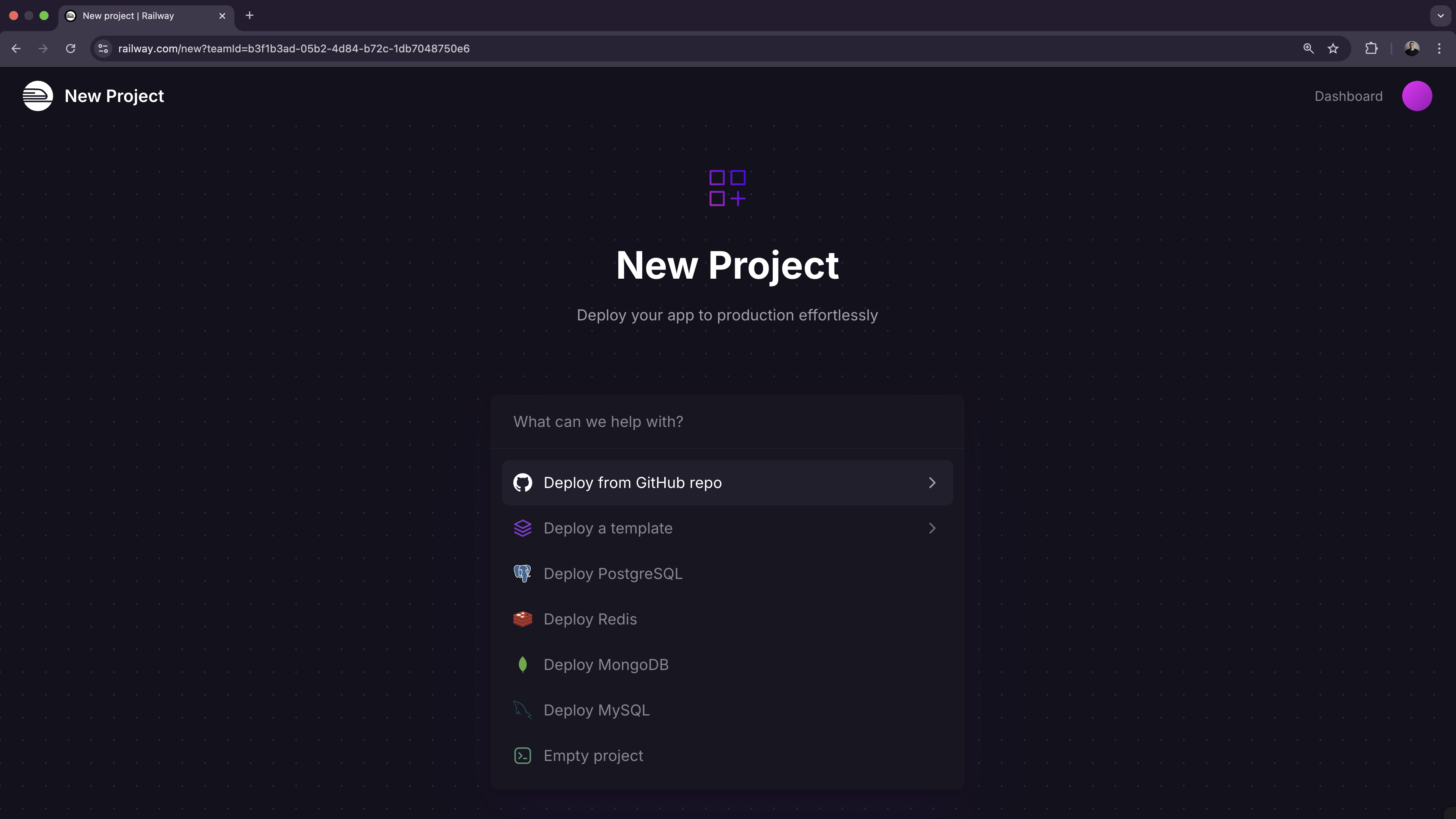
- If your project is using any environment variables or secrets:
- Click on the deployed service.
- Navigate to the “Variables” tab.
- Add a new variable by clicking the “New Variable” button. Alternatively, you can import a
.envfile by clicking “Raw Editor” and adding all variables at once.
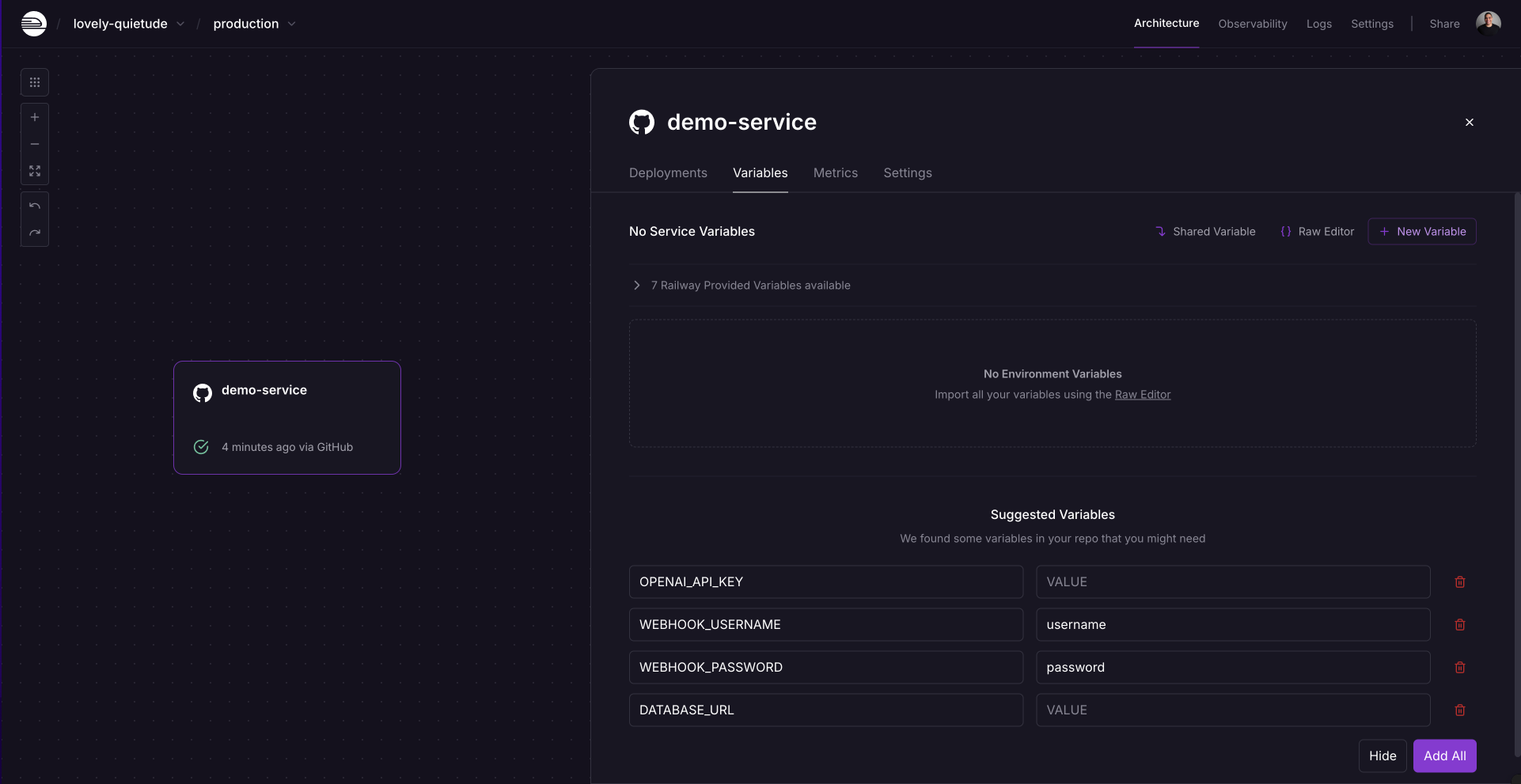
- To make your project accessible over the internet, you will need to configure a domain:
- From the project’s canvas, click on the service you would like to configure.
- Navigate to the “Settings” tab.
- Go to the “Networking” section.
- You can either:
- Generate a Railway service domain: this will make your app available under a
.up.railway.appdomain. - Add a custom domain: follow the DNS configuration steps.
- Generate a Railway service domain: this will make your app available under a
Need help or have questions?
If you need help along the way, the Railway Discord and Help Station are great resources to get support from the team and community.
Working with a larger workload or have specific requirements? Book a call with the Railway team to explore how we can best support your project.
Edit this file on GitHub